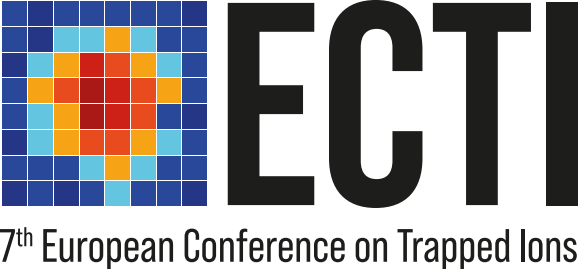Sprecher
Beschreibung
The integration of photonic components in surface electrode traps is a promising approach for scalable quantum computing with trapped ions [1].
Integrated photonics enables efficient delivery of laser light to the trap chip. Beams can be tightly focused on the ions, reducing power requirements, and a given configuration of laser fields can be reliably reproduced in different zones of the trap. It allows for full in-fiber manipulation of light all the way from the source to the ions, which compactifies the experimental setup and makes it less prone to instabilities and drifts. Integrated optics can be used to shape the spatial mode of the laser field, creating engineered laser-ion interactions for enhanced quantum operations.
Here we report on the last years of research endeavors on integrated photonics at ETH Zurich. We focused on surface traps equipped with integrated waveguides and diffractive optput couplers made of silicon nitride, carrying light at 729 nm to address the quadrupole
We demonstrated the first two-qubit entangling gate controlled by integrated light in a trap with one 729 integrated beam addressing multiple ions [2].
In our current design, two integrated laser beams coherently interfere at the ion location forming a passively phase-stable standing wave. We characterized the spatial structure of the light field and the optical performance of the device using one trapped ion as a probe [3]. Such a structured light field can be used to enhance the fidelity of entangling gates [4] and generate state-dependent optical potentials in a novel way.
Finally, we explore the use of such devices for scalable multizone quantum operations. We implemented real-time control of the trapping potential, which allowed for loading multiple ion crystals, splitting and shuttling them along the trap axis, and for simultaneous control of ions in different trap zones.
[1] K. K. Mehta et al., Nature Nanotechnology 11.12 (2016).
[2] K. K. Mehta et al., Nature 586, 533-537 (2020).
[3] A. R. Vasquez et al., Phys. Rev. Lett. 130 133201 (2023).
[4] K. K. Mehta et al., Advances in Photonics of Quantum Computing,
Memory, and Communication, XII 10933 (2019).

